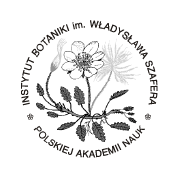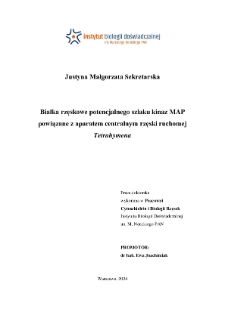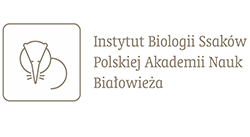- Search in all Repository
- Literature and maps
- Archeology
- Mills database
- Natural sciences
Advanced search
Advanced search
Advanced search
Advanced search
Advanced search

Object
Title: Białka rzęskowe potencjalnego szlaku kinaz MAP powiązane z aparatem centralnym rzęski ruchomej Tetrahymena : praca doktorska
Institutional creator:
Instytut Biologii Doświadczalnej im. Marcelego Nenckiego PAN.
Contributor:
Joachimiak, Ewa (1973- ) : Supervisor
Publisher:
Instytut Biologii Doświadczalnej im. Marcelego Nenckiego PAN
Place of publishing:
Description:
165 pages : illustrations ; 30 cm ; Bibliography ; Summary in English
Degree name:
Degree discipline :
Degree grantor:
Nencki Institute of Experimental Biology PAS ; degree obtained in 2024
Type of object:
Abstract:
Cilia and flagella are evolutionary conserved structures which protrude from the apical surface of the eukaryotic cells in both unicellular organisms and humans. There are two major types of cilia – motile and non-motile cilia (also called primary cilia). In mammals, motile cilia are formed on the apical surface of epithelial cells lining e.g. respiratory tract. Sperm cells possess special type of cilium called flagellum. Lack or defects in motile cilia lead to primary ciliary dyskinesia that involves e.g. chronic airway diseases and defects in fertility. Motile cilia axoneme consists of nine outer microtubule doublets which are accompanied by protein complexes responsible for generation of cilia movement. In the central part of the axoneme localizes structure called central apparatus which comprises two single microtubules surrounded by multiprotein complexes called projections. Up to now, exact protein composition of these protein complexes remains unknown, therefore the function of central apparatus and its role in generation of cilia movement is only partially resolved. One of the hypotheses suggests that the signal needed for cilia beating is initiated in central apparatus. However, it cannot be excluded that functions of central apparatus are regulated by enzymatic proteins. Nevertheless, the available data are only fragmentary. This thesis focuses on so-far uncharacterized central apparatus proteins, potentially being part of ciliary MAP kinases-regulatory pathway. Experiments presented in this thesis were conducted with use of well established, unicellular model organism – Tetrahymena thermophila. Based on analysis of previously obtained ciliomes from mutants that lack C1b projection (SPEF2A-CoDel), three kinases– Mapk3, Map2k7, Nek6, two phosphatases: Pp2c and Dusp5 and kinesin Kif9 which build C2c projection were selected for further research. All of these proteins were downregulated in Tetrahymena mutants lacking C1b projection. Amino acid sequence analysis of studied proteins revealed that all of them are evolutionary conserved. Conducted research allowed to confirm that all examined proteins localize in Tetrahymena cilia and when overexpressed are present in both cilia and cell body. BioID and coimmunoprecipitation experiments showed that Dusp5 not only localizes in close proximity but also forms stable complex with C1b projection proteins in Tetrhymena - that is with Spef2A, Cfap69, Androglobin and Cfap246/Lrguk. BioID and pull-down experiments results showed also that both Dusp5 and kinesin Kif9 directly interact with Mapk3, Map2k7 and Nek6 – that is with all examined kinases. None of them interacted with Pp2c phosphatase. These results allowed to propose a model of interaction network between these proteins. Moreover, functional analysis of Dusp5 and Kif9 was also performed. For this, Tetrahymena knock-out mutants lacking Dusp5 or Kif9 were prepared. Lack of Dusp5 or Kif9 resulted in reduced cell swimming speed. Interestingly, both mutants had slower cilia regeneration rate after experimental deciliation which suggest that both of them can participate in ciliary intraflagellar transport. Additionally, no changes in cell proliferation, phagocytosis or cilia length have been observed. To sum up, conducted experiments allowed to identify and at least partly characterize novel potential regulators of the central apparatus functions.
Detailed Resource Type:
Resource Identifier:
Source:
Language:
Language of abstract:
Rights:
Terms of use:
Copyright-protected material. May be used within the limits of statutory user freedoms
Copyright holder:
Publication made available with the written permission of the author
Digitizing institution:
Nencki Institute of Experimental Biology of the Polish Academy of Sciences
Original in:
Library of the Nencki Institute of Experimental Biology PAS
Access:
Object collections:
- Digital Repository of Scientific Institutes > Partners' collections > Nencki Institute of Experimental Biology PAS > Dissertations
- Digital Repository of Scientific Institutes > Partners' collections > Nencki Institute of Experimental Biology PAS > Dissertations > PhD Thesis
- Digital Repository of Scientific Institutes > Literature
- Digital Repository of Scientific Institutes > Literature > Thesis
Last modified:
Dec 13, 2024
In our library since:
Dec 6, 2024
Number of object content downloads / hits:
8
All available object's versions:
https://rcin.org.pl./publication/279744

 INSTYTUT ARCHEOLOGII I ETNOLOGII POLSKIEJ AKADEMII NAUK
INSTYTUT ARCHEOLOGII I ETNOLOGII POLSKIEJ AKADEMII NAUK
 INSTYTUT BADAŃ LITERACKICH POLSKIEJ AKADEMII NAUK
INSTYTUT BADAŃ LITERACKICH POLSKIEJ AKADEMII NAUK
 INSTYTUT BADAWCZY LEŚNICTWA
INSTYTUT BADAWCZY LEŚNICTWA
 INSTYTUT BIOLOGII DOŚWIADCZALNEJ IM. MARCELEGO NENCKIEGO POLSKIEJ AKADEMII NAUK
INSTYTUT BIOLOGII DOŚWIADCZALNEJ IM. MARCELEGO NENCKIEGO POLSKIEJ AKADEMII NAUK
 INSTYTUT BIOLOGII SSAKÓW POLSKIEJ AKADEMII NAUK
INSTYTUT BIOLOGII SSAKÓW POLSKIEJ AKADEMII NAUK
 INSTYTUT CHEMII FIZYCZNEJ PAN
INSTYTUT CHEMII FIZYCZNEJ PAN
 INSTYTUT CHEMII ORGANICZNEJ PAN
INSTYTUT CHEMII ORGANICZNEJ PAN
 INSTYTUT FILOZOFII I SOCJOLOGII PAN
INSTYTUT FILOZOFII I SOCJOLOGII PAN
 INSTYTUT GEOGRAFII I PRZESTRZENNEGO ZAGOSPODAROWANIA PAN
INSTYTUT GEOGRAFII I PRZESTRZENNEGO ZAGOSPODAROWANIA PAN
 INSTYTUT HISTORII im. TADEUSZA MANTEUFFLA POLSKIEJ AKADEMII NAUK
INSTYTUT HISTORII im. TADEUSZA MANTEUFFLA POLSKIEJ AKADEMII NAUK
 INSTYTUT JĘZYKA POLSKIEGO POLSKIEJ AKADEMII NAUK
INSTYTUT JĘZYKA POLSKIEGO POLSKIEJ AKADEMII NAUK
 INSTYTUT MATEMATYCZNY PAN
INSTYTUT MATEMATYCZNY PAN
 INSTYTUT MEDYCYNY DOŚWIADCZALNEJ I KLINICZNEJ IM.MIROSŁAWA MOSSAKOWSKIEGO POLSKIEJ AKADEMII NAUK
INSTYTUT MEDYCYNY DOŚWIADCZALNEJ I KLINICZNEJ IM.MIROSŁAWA MOSSAKOWSKIEGO POLSKIEJ AKADEMII NAUK
 INSTYTUT PODSTAWOWYCH PROBLEMÓW TECHNIKI PAN
INSTYTUT PODSTAWOWYCH PROBLEMÓW TECHNIKI PAN
 INSTYTUT SLAWISTYKI PAN
INSTYTUT SLAWISTYKI PAN
 SIEĆ BADAWCZA ŁUKASIEWICZ - INSTYTUT TECHNOLOGII MATERIAŁÓW ELEKTRONICZNYCH
SIEĆ BADAWCZA ŁUKASIEWICZ - INSTYTUT TECHNOLOGII MATERIAŁÓW ELEKTRONICZNYCH
 MUZEUM I INSTYTUT ZOOLOGII POLSKIEJ AKADEMII NAUK
MUZEUM I INSTYTUT ZOOLOGII POLSKIEJ AKADEMII NAUK
 INSTYTUT BADAŃ SYSTEMOWYCH PAN
INSTYTUT BADAŃ SYSTEMOWYCH PAN
 INSTYTUT BOTANIKI IM. WŁADYSŁAWA SZAFERA POLSKIEJ AKADEMII NAUK
INSTYTUT BOTANIKI IM. WŁADYSŁAWA SZAFERA POLSKIEJ AKADEMII NAUK




































